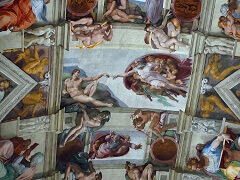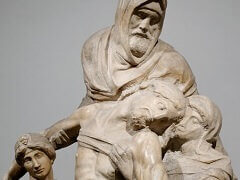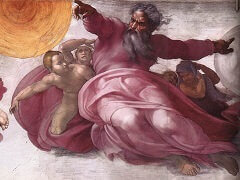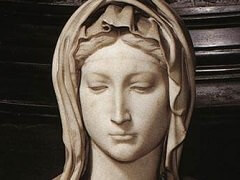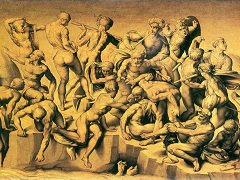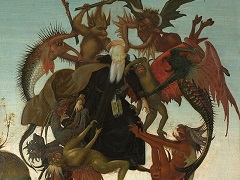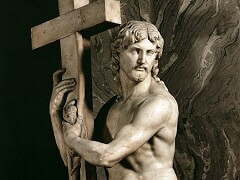The Head of a Faun, by Michelangelo
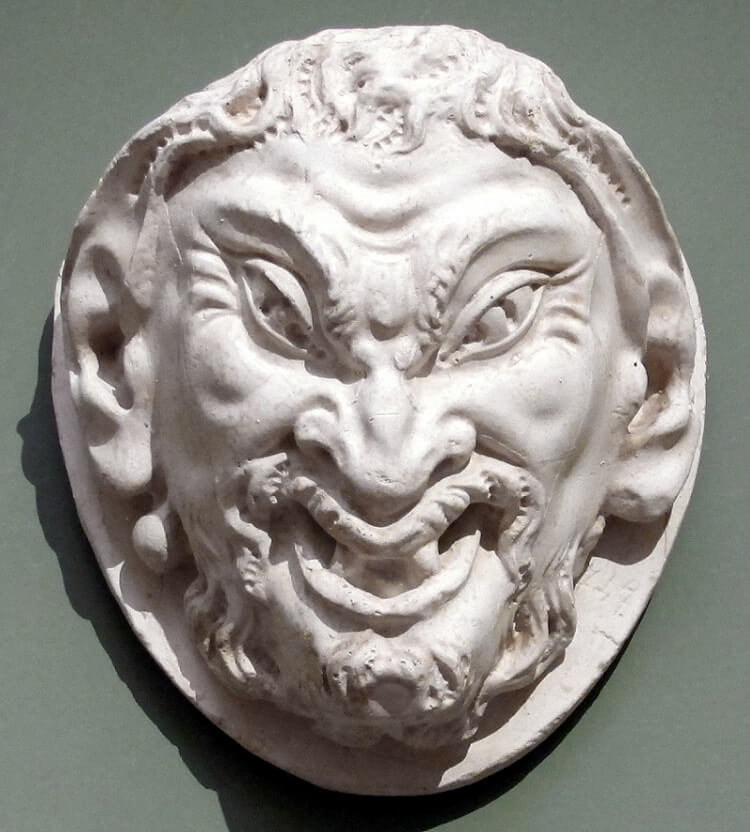
A favourite episode among biographers of the young Michelangelo, also celebrated in later artistic representations, concerns the Head of a Faun, which Michelangelo sculpted from a piece of marble after an ancient model of an old, bearded faun-like face. Michelangelo had drawn upon his imagination to add on the features that were missing in the antique model, that is, the nose and "the open mouth as of a man laughing". Lorenzo il Magnifico both praised the young man's work, and good-heartedly criticized it, pointing out that it was unlikely that a man that age would have all his teeth. Inspired by the Magnifico's observation, Michelangelo hastened to remove one of the teeth by drilling into the gum, and it pleased his patron to see how quickly he was able to modify the sculpture. The Head is now said to be lost, but a lively debate went on concerning a similar marble and mask, believed until 1860 to be the original one; at first displayed at the Uffizi Gallery it was then transferred to the Museo Nazionale del Bargello in 1865, after which it was stolen during World War II, and therefore cannot at the present time be fully evaluated. The piece, recalled by Filippo Baldinucci in 1681 as just having arrived from the collection of the Grand Duke's secretary Apollonio Bassetti, is referred to in copies and derivations. The original would have had a label to prove it was an autograph.
The attribution was dismissed in the 20th century, but it was again taken up on the basis of style when the plaster was displayed in 1999, which resulted in the renewed and insistent suggestion that it was dated from the late 15th century, and that it had all the features of a work by a young sculptor as gifted as Michelangelo must have been when he made his first attempts at carving.


